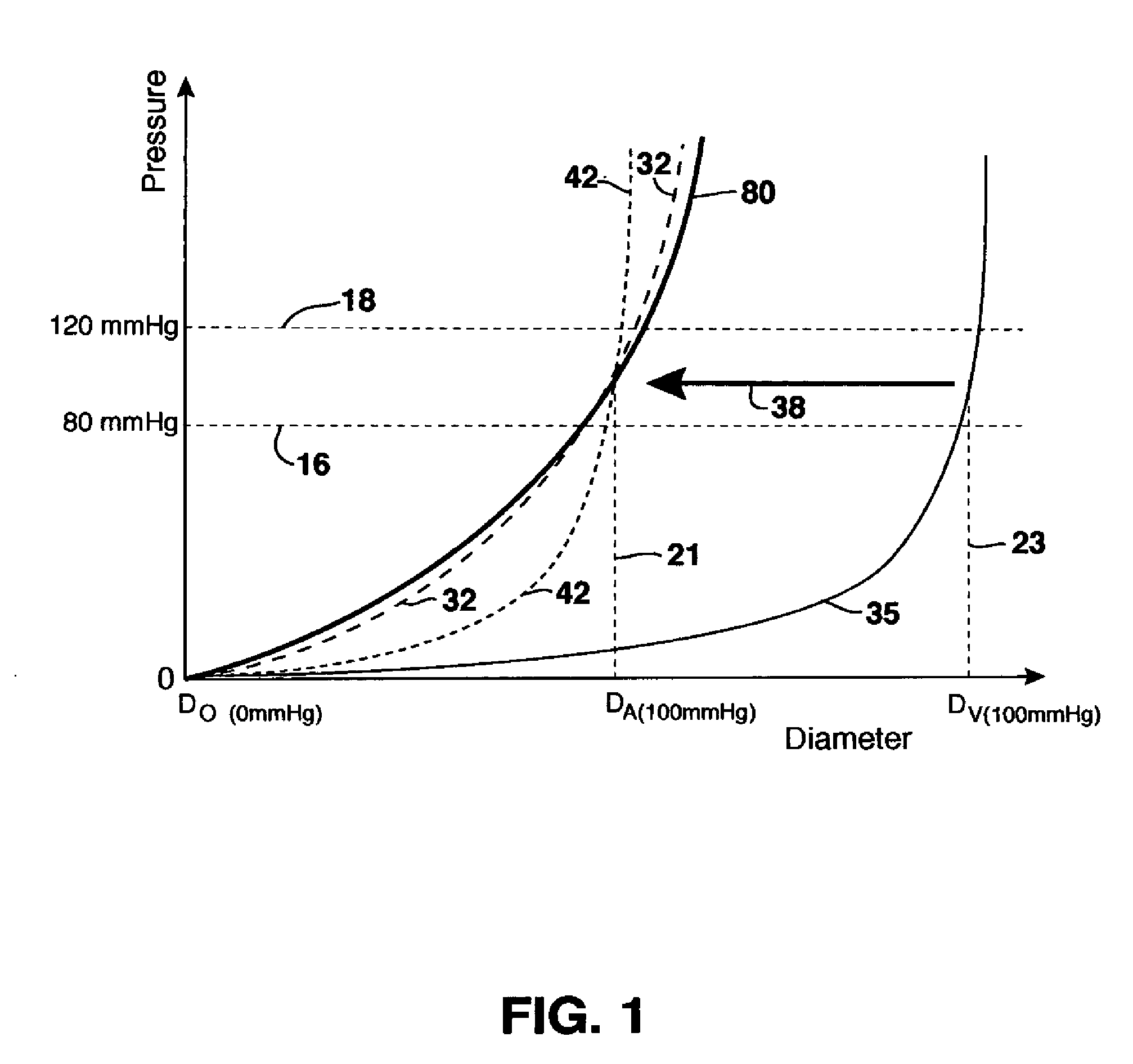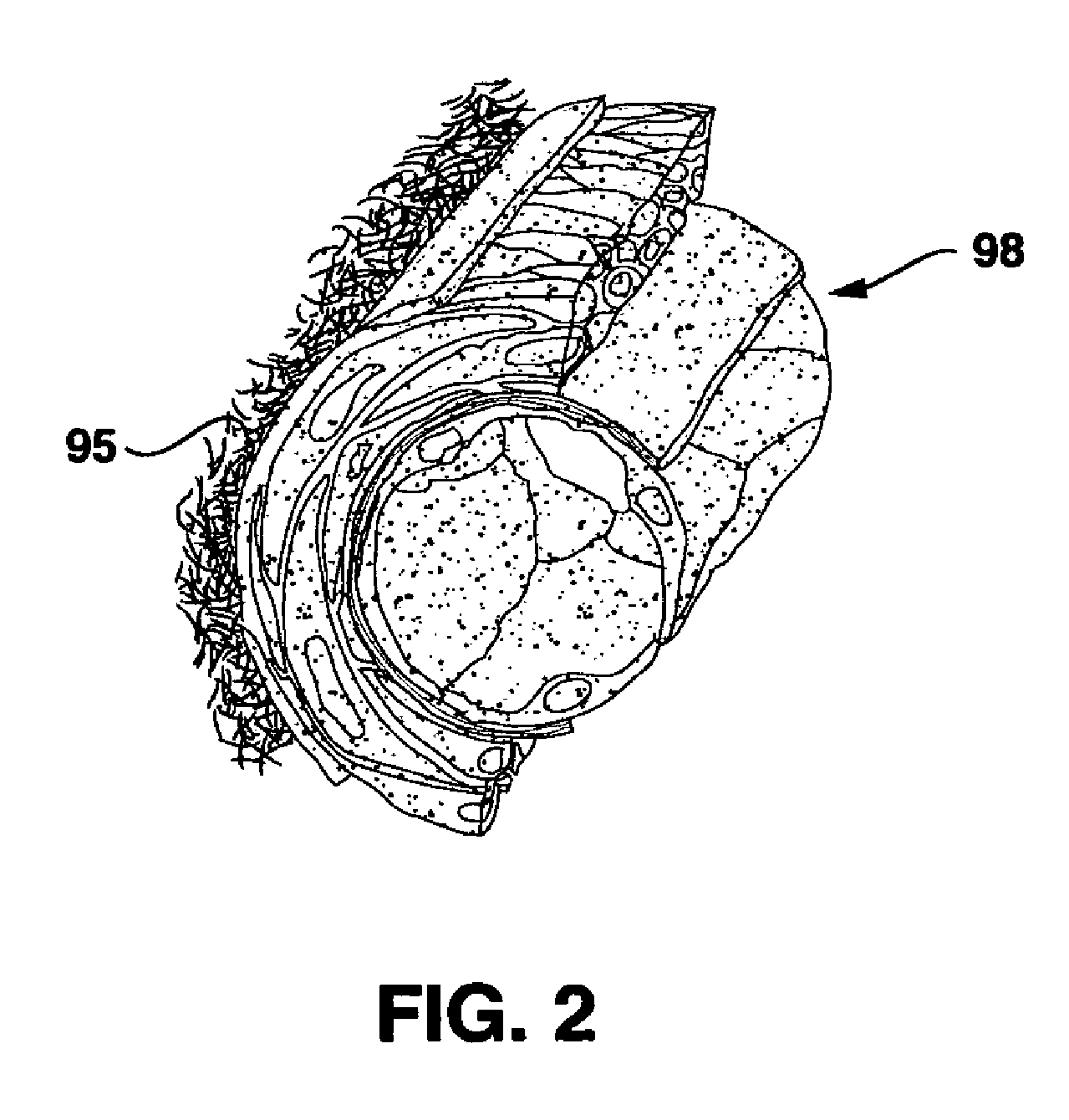Compliant blood vessel graft
a blood vessel and graft technology, applied in the field of grafts, can solve the problems of increased stress, graft failure, and disturbed flow patterns
- Summary
- Abstract
- Description
- Claims
- Application Information
AI Technical Summary
Benefits of technology
Problems solved by technology
Method used
Image
Examples
example 1
Effect of External Reinforcement of Vein Grafts on the Remodeling of the Veins Transposed into Arterial Circulation
[0199] Briefly, a baboon bilateral femoral artery vein graft model was used in a two-factor study to assess the effects of stented and non-stented vein grafts, and implant duration (6 weeks and 12 weeks) in a total of eight (8) baboons.
[0200] Protocols
[0201] The non-compliant stented vein grafts used in this study were segments of superficial femoral vein stented with Nitinol (NiTi)-wire tubular braid stents with an OD of 5 mm, assumed to be non-compliant in a radial direction such that no change in diameter due to changing blood pressure would be permitted. The majority of stents used for implantations were 36 carrier (wire) Nitinol stents with 0.025 mm wire thickness, with an expected compliance of between about 1.6 to 2.3% / 100 mmHg. One implantation for the 6 week implant duration included one pilot implantation with a stent having 72 carriers (wires) and 0.050 mm...
example 2
Stent Size: Effect of Down-Sizing and Oversizing of External Reinforcement of Vein Grants on Remodeling of Veins Transposed Into Circulation
[0232] A baboon bilateral femoral artery vein graft model was used in a two-factor study to assess the effect of stent size in stented femoral vein grafts at two implant durations. A “senescent Chacma Baboon” model, with the superficial femoral vein used as end-to-end interposition graft in the superficial femoral artery, using protocols similar to those described in Example 1, above, was used to implement a study design wherein one experimental group of four (4) baboons was implanted with vein grafts externally stented with non-compliant Nitinol braided stents of 6.6 mm internal diameter (Group 1, “6.6 mm stented vein grafts”), and one experimental group of four (4) baboons was implanted with vein grafts externally stented with non-compliant Nitinol braided stents of 3.3 mm internal diameter (Group 2, “3.3 mm stented vein grafts”), for each of...
example 3a
Determination of In Vivo Compliance of External Saphenous Vein Stented Grafts Via Ultrasound Measurements in Canine Femoral Graft Model System
[0249] A two-factor study varied graft design and implant duration, i.e., implanting a non-stented vein graft (also called “vein alone”) or a stented vein graft with, for different implant durations. Ultrasound examination was used to show that a saphenous vein graft supported by a radially-compliant external stent results in an in vivo graft which continues to show radial compliance throughout the healing phase. Briefly, four (4) canines were implanted, each with one non-stented vein graft and one stented vein graft. Ultrasound measurements were made at 2, 4, 8, and 12 weeks after implantation to track graft patency and to estimate in vivo compliance values. At 12 weeks after implantation, grafts were explanted and prepared for histological evaluation.
[0250] Protocols:
[0251] Four (4) adult female canines were implanted with autologous vein...
PUM
 Login to View More
Login to View More Abstract
Description
Claims
Application Information
 Login to View More
Login to View More - R&D
- Intellectual Property
- Life Sciences
- Materials
- Tech Scout
- Unparalleled Data Quality
- Higher Quality Content
- 60% Fewer Hallucinations
Browse by: Latest US Patents, China's latest patents, Technical Efficacy Thesaurus, Application Domain, Technology Topic, Popular Technical Reports.
© 2025 PatSnap. All rights reserved.Legal|Privacy policy|Modern Slavery Act Transparency Statement|Sitemap|About US| Contact US: help@patsnap.com



